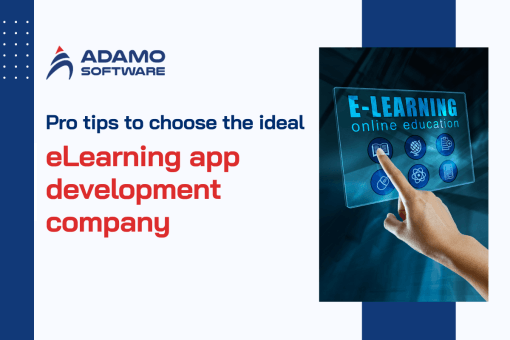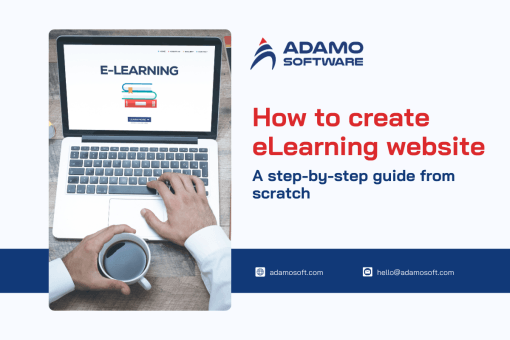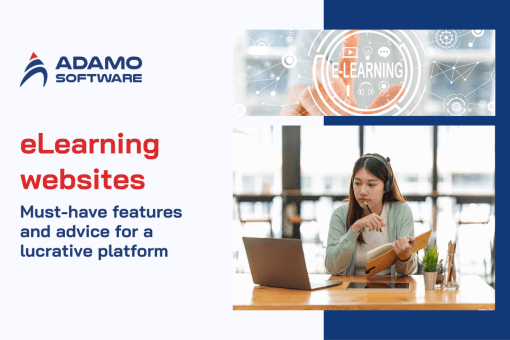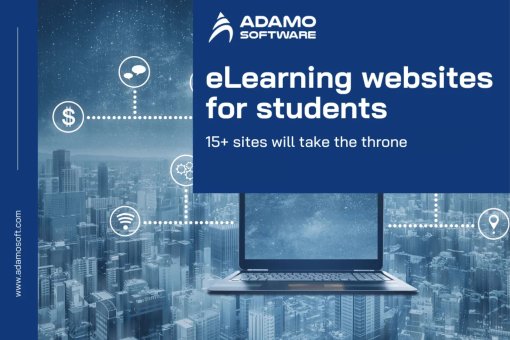Tips and recommended tech stacks to build online learning platforms for kids
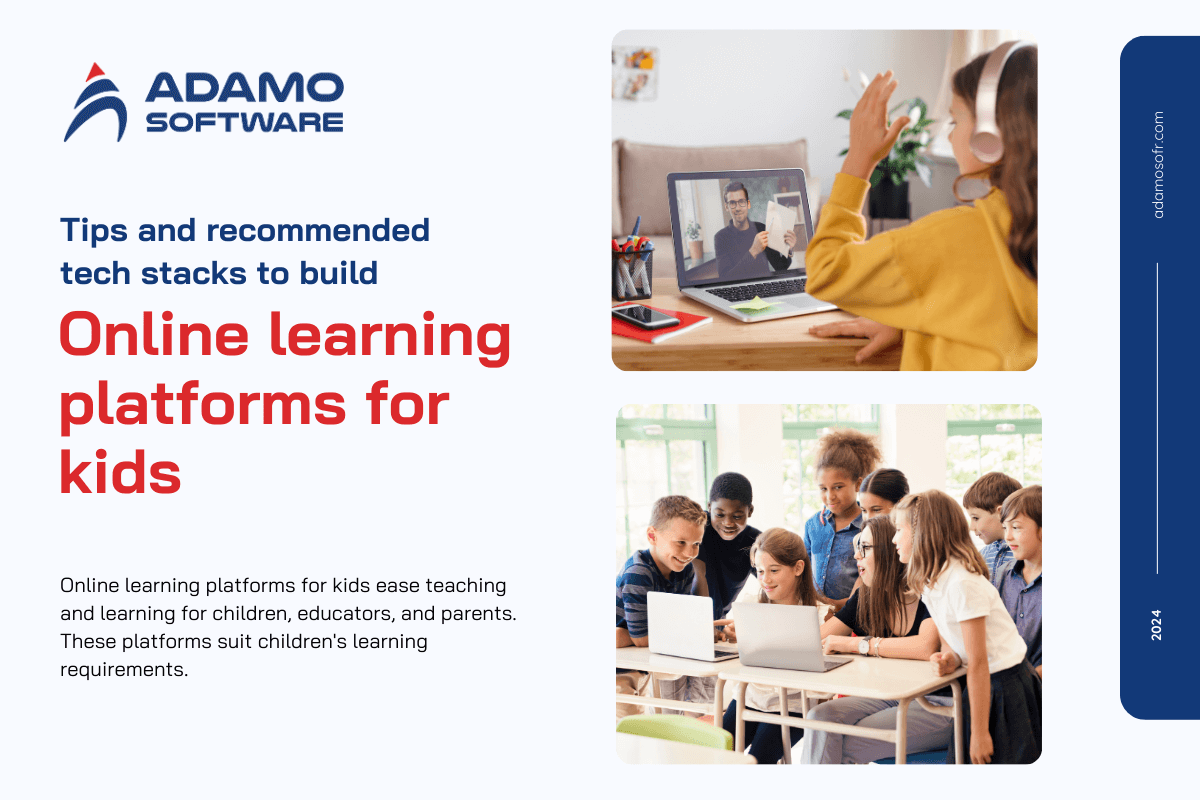
Digital learning has shifted education for children. This shift is an implication that cannot be ignored. Online learning platforms for kids ease teaching and learning for children, educators, and parents. These platforms suit children’s learning requirements. They provide engaging content. This content makes learning enjoyable and productive.
However, it is necessary to be thoughtful in choosing the right technology stack. Creating materials suitable for young learners is essential. We will also explore the technology tools suggested for building online learning platforms for kids.
I. Highlighted statistics about online learning platforms for kids
With the innovation of technology, it is easier for the younger generation to learn through the Internet and many other learning platforms. A modern approach to learning through online technological facilities has gained popularity. These facilities complement common and effective ways of teaching and learning. They address the needs of young learners. Examining the data is necessary to give a clear picture of the results and the development of communities. In the next section, we shall discuss burning data about the growth in importance and efficiency of online learning platforms for kids:
- Rising usage: More than half of children attend online learning platforms as a part of their daily schedules. This number is only set to increase.
- Engagement Boost: Research has revealed that children prefer online learning platforms. These platforms are designed to enhance learning to achieve higher rates of lesson mastery. They also motivate kids to learn more than traditional techniques.
- Global Market Growth: Targeted for kids, the online learning platform market tends to grow and is expected to reach $15 billion (about $46 per person in the US) by 2025.
- Parental Preference: Many parents favor online learning platforms for kids. The reasons are the method’s versatility, the content’s availability, and the lessons’ effectiveness.
- Future Projections: Some significant trends and expectations portray that the usage of online learning platforms for kids will increase. This is due to technology improvement and the awareness of the positive impact of online learning for kids.
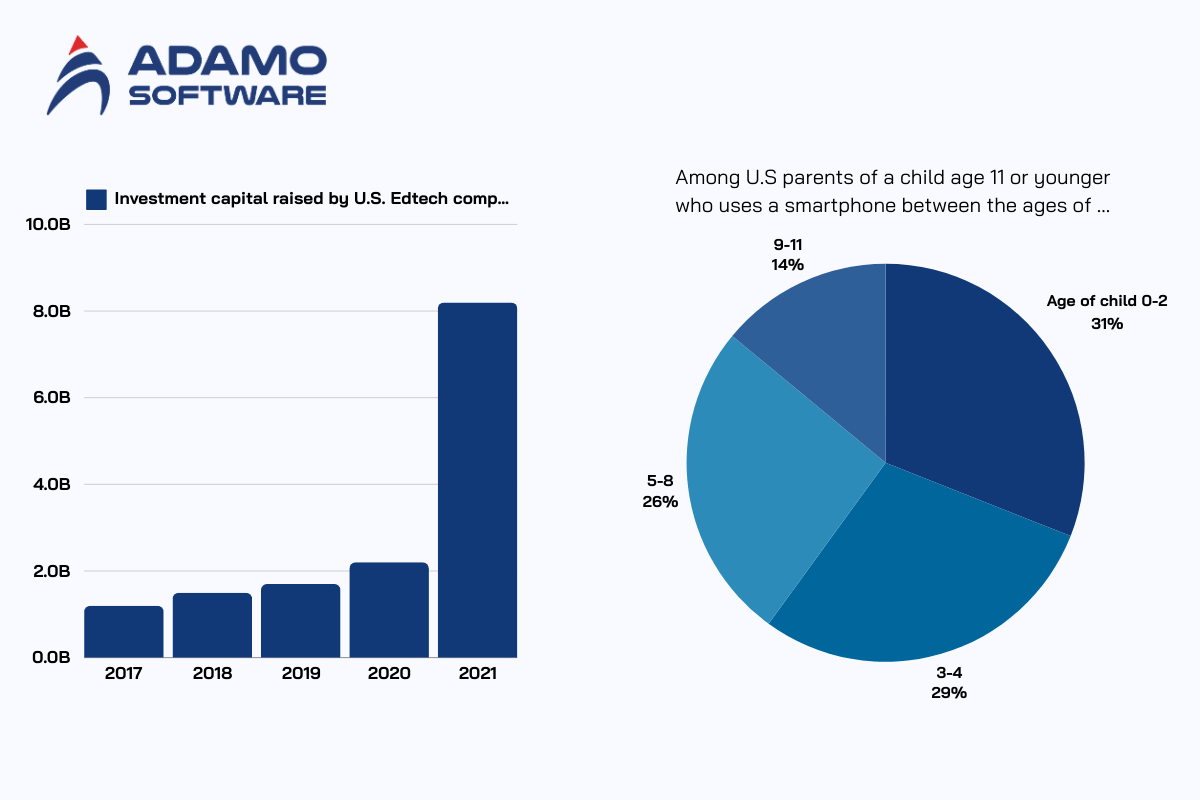
II. Examples of children’s online learning platforms
It is critical to identify the right examples of integrating education with fun. This is important while focusing on online learning platforms for kids. These platforms are intended for children to develop various interests. They allow learning through play for children of different ages and with various learning processes. We will present some of the most popular platforms utilized in e-learning for kids and discuss their benefits. From engaging lesson sequences to adaptive environments for learners or game-based solutions, these platforms do not merge into the sea of tech solutions.
1. ABCmouse
ABCmouse is an online learning site for kids. It is aimed at children between the ages of 2 and 8 years. It is an ideal platform because it teaches kids all the necessary information in several subjects. These subjects range from math to art and from reading to science. It follows the rules of early years learning and development.
Key Features:
- Interactive Lessons: ABCmouse’s current lessons are captivating and enable children’s skills to develop from their interest in different lessons.
- Progress Tracking: Teachers and parents can quickly monitor a child’s progress. Thus, it is one of the best online learning platforms for children.
- Adaptive Learning Path: It follows the learners’ pace, which makes it a worthy platform to engage with children in learning.
- Extensive Content Library: This provides numerous educational activities, videos, and games. They help the child reinforce what has been taught across all facets.
- Mobile Compatibility: Because of the availability of the main application on multiple devices, students can attend ABCmouse from any online device.
2. Khan Academy Kids App for Children
Khan Academy Kids is an online learning platform developed to teach children between the ages of 2 and 7 years at no charge. It is purposely used to increase a love for learning activities that can easily suit the child or the learner.
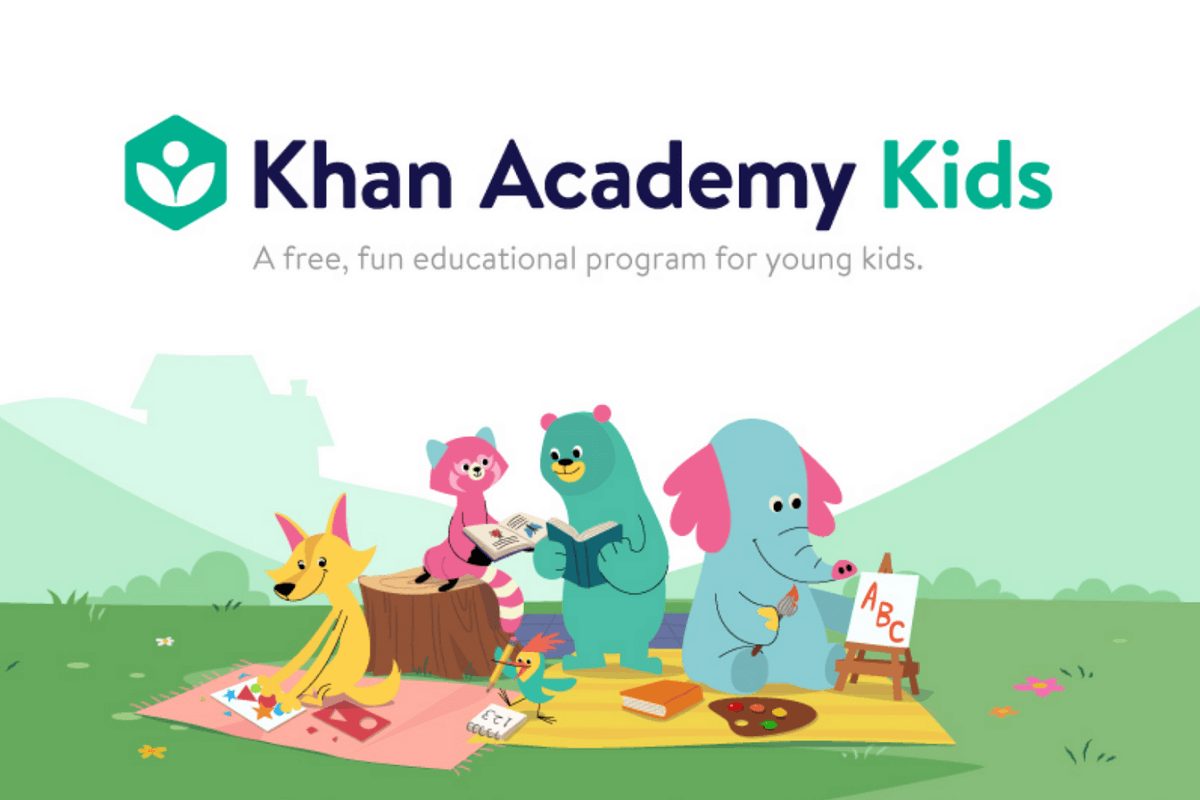
Key Features:
- Personalized Learning Experience: The Kids’ section of Khan Academy is unique because it adapts children’s unique learning paths based on their abilities. This feature sets it far from other online learning platforms for kids.
- Interactive Storytelling: Education becomes engaging and fun using interactive storytelling as applied in the platform.
- Comprehensive Curriculum: Involves the idea of continuity across multiple subject areas, from literacy to math and social and emotional aspects.
- Ad-free Environment: Khan Academy Kids is completely safe. Moreover, it has no ads, which is especially important for kids’ online learning applications.
- Offline Access: Enables kids to get their content from the internet mainly in an offline manner. Hence, Khan Academy Kids makes it very useful and easy to use.
3. Adventure Academy
Adventure Academy is a more evolved online learning environment that caters to kids between the ages of 8 and 13. It teaches role-playing games, a form of education where students can explore for themselves.
Key Features:
- Immersive Learning World: Adventure Academy focuses on learning via playing as it has a realistic virtual environment.
- Gamified Learning: This feature sets it apart from other online learning platforms for kids. It makes learning more interesting with game likes.
- Social interaction: Enables children to play with other children controlled to facilitate social learning.
- Cross-Subject Integration: Essentials of various subjects are complied with and included in the learning activities of the platform. This gives the children a balanced education.
- Regular Content Updates: Adventure Academy does change the content very often, so it is one of the most active online schools for children.
III. Tech stack for the e-learning platform
Selecting the right technologies to implement a proper online learning platform for kids remains one of the most important key factors. Here’s a breakdown of the essential components of a tech stack specifically tailored for online learning platforms for kids:
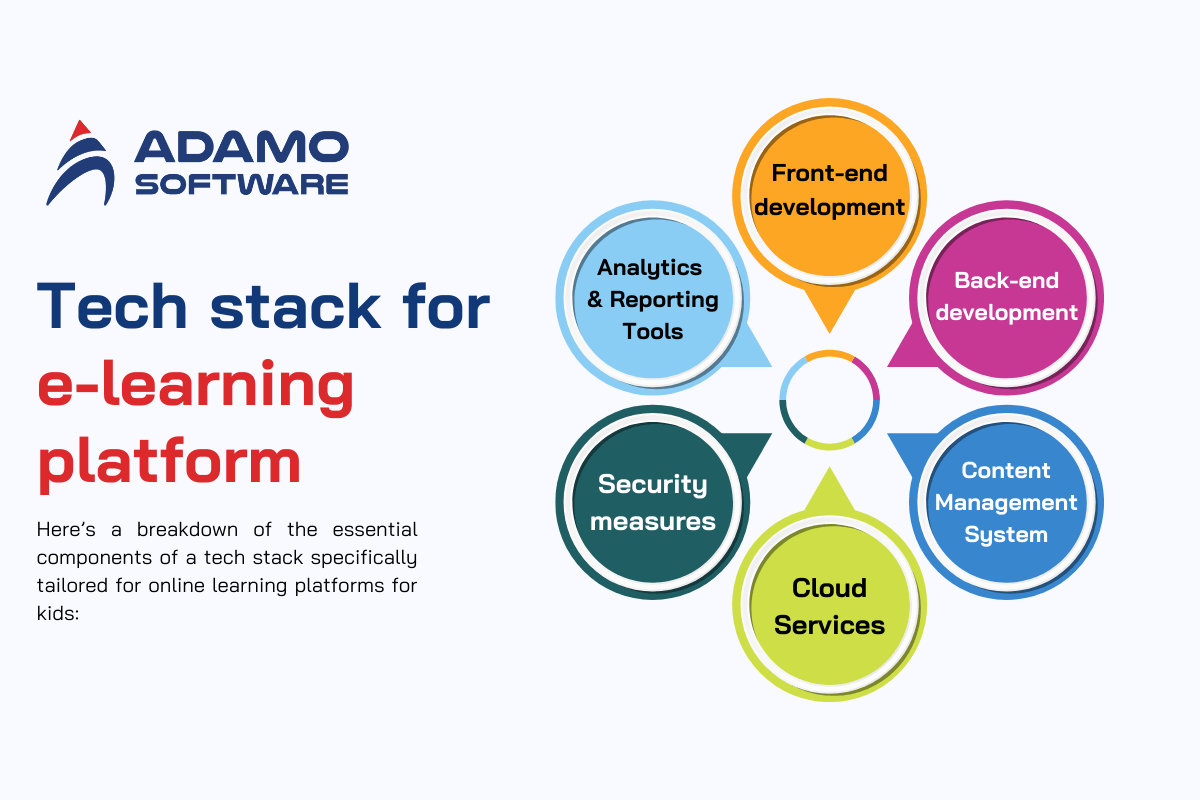
1. Front-End Development
- Frameworks and Libraries: React, Angular, or Vue.js are excellent for building engaging and interactive user interfaces. These interfaces are important to attract young learners to online learning platforms meant for kids.
- Responsive Design: Another feature that must be implemented is responsive design. Since children often use tablets or smartphones to attend online classes through online learning platforms for kids.
2. Back-End Development
- Server-Side Frameworks: Node.js, Django, or Ruby on Rails are examples of development frameworks to create backends for online learning platforms for kids. These frameworks provide flexibility and real-time data handling to improve the learning process for the end user.
- Database Management: While working with big volumes of user data and content, it is wise to use databases such as PostgreSQL, MongoDB, or MySQL. These databases offer the possibility of growing online learning platforms for kids, which is essential in the current situation.
3. Content Management System (CMS)
- If you generate a lot of content, WordPress with WordPress e-learning plugins or a customized CMS solution will be helpful. This is useful for updating the educational content on the sites and making them more enticing.
4. Cloud Services
- Hosting and Storage: By adopting cloud services like AWS, Google Cloud, or Azure, online learning platforms for kids are easily upscale. They will not face any issues regarding loading time while reaching high traffic.
- Content Delivery Network (CDN): CDN provides content to the user globally where educational websites with kids’ learning content are situated.
5. Security Measures
- Data encryption: child information and their progress reports are especially susceptible to attackers. Thus, rendering the SSL certificates and encryption protocols critical for the online learning platforms for kids.
- User authentication: Data security measures such as MFA employ secure ways of allowing kids to log into online learning systems. This prevents unauthorized persons from getting access to the systems.
6. Analytics and Reporting Tools
- The incorporation of analytical tools such as Google Analytics or other application dashboards is helpful. This helps an educator or a parent to track the child’s learning progress. It improves the areas that affect kids in their online learning platforms by providing key insights.
As a result, when these tech stacks are properly selected and integrated, it is possible to develop sophisticated, safe, and scalable online learning platforms for kids. Therefore, they will provide kids with effective and engaging educational experiences.
Also read: How to estimate the cost of Online learning platforms for schools
IV. How to Create an Effective Online Learning Platform for Kids
Designing effective online learning platforms for kids requires some work. It is important to ensure that extra consideration has gone into the design because children have a specific way of learning. Here are several key aspects to consider in building a platform that truly engages and educates children:

1. Interactive and Engaging Content
In our case, the main feature of high-quality online education for children is engaging content. Using elements such as games, quizzes, and multimedia increases young learners’ attentiveness during learning. Education becomes more effective when children participate in the process. This participation increases the chances of learning.
2. Age-Appropriate Design
When designing online learning platforms for kids, the layout of the program should be simplified. The pictures on the display should be stimulating to the young minds of the targeted kids. The colors used, the page or game layout, and the controls must be clearly labeled. The overall design must be bright and uncluttered to interest children. The platform’s interface needs to be simple. This simplicity prevents a child from needing more help navigating the content areas.
3. Personalized Learning Paths
Thus, it is crucial to note that an ideal online learning program for kids must be personalized. It is possible to present content in the way that learners require through adaptive learning technologies on the platform. This personalization aids in guaranteeing that each child gets the right level of challenge that they need, which is very crucial.
4. Parental Involvement and Monitoring
An ideal online learning program for kids must be personalized. Content can be presented in the way required through adaptive learning technologies on the platform. This personalization aids in guaranteeing that each child gets the right level of challenge.
5. Safe and Secure Environment
Online learning platforms for kids require special consideration for their safety. Nowadays, it is critical to guarantee that the security level of the service is optimal. This ensures that the user’s data is not put in danger. There should be effective restrictions on content to safeguard the innocence of children. These restrictions protect children from some of the information and materials they come across while using the platform. Additionally, there should be control over the privacy of users.
6. Motivational Elements
To maintain the engagement of children, it is essential to integrate rewards and recognition into the online learning environment. Aspects like badges, certificates, and tracking will help these kids to achieve their set learning goals and objectives. Game-incorporated aspects can make the learning process enjoyable and virtually encouraging and make online learning platforms for children more effective.
7. Accessibility and Inclusivity
A good online learning environment should be available to all children, especially those with disabilities. Some basics must still be met: the site must be accessible to disabled people. The text must be qualitative and have the option of text-to-speech. There should be the possibility to change the text size and more. This approach ensures that every child has a chance to learn from the educational offers available on the platform, even if they have certain disabilities.
By enhancing these critical elements, developers can make online learning platforms for kids both fun and educational. The platform discussed herein should be engaging, secure, personalized, and available to every child. Therefore, it can be a useful tool in the educational development of a child.
V. Adamo Software – the ideal partner for your online learning platforms for kids
We at Adamo Software provide a verified method for online learning for kids. We are also experts in the development of educational services for children. Adept in the e-learning domain, the company’s primary focus while developing the course and lessons is to make them interactive and entertaining. The team of developers and designers works to adapt the platform. This adaptation enables children and individual learners to easily understand how to navigate through the platforms.

What makes Adamo Software stand out is that we work with the primary goal of establishing protected and highly sustainable web-educational environments for children. At the same time, preserving the security of young users is one of our top features. We also provide the opportunity for the platform’s development under your expanding educational requirements. If you need a new e-learning platform designed from the ground up or seek to improve an existing one, Adamo Software can supply the know-how and creativity. We develop satisfactory and engaging e-learning platforms that capture children’s interest and facilitate learning.






